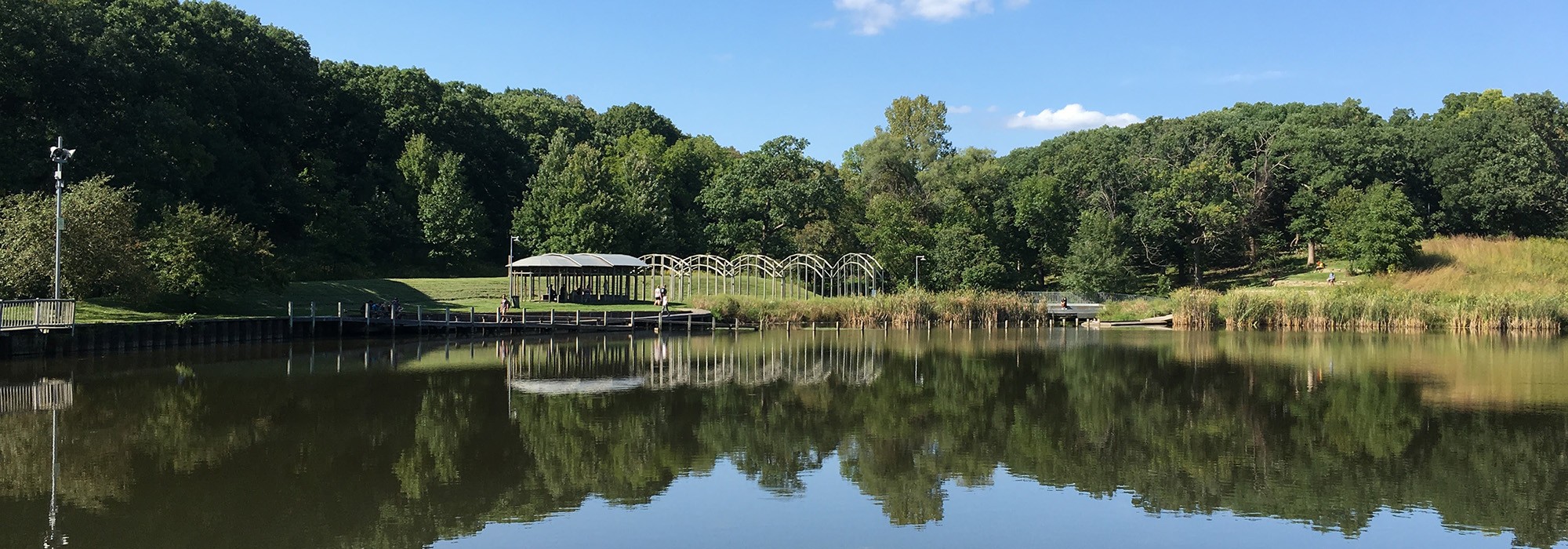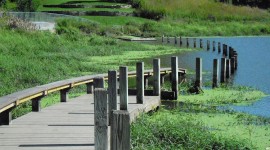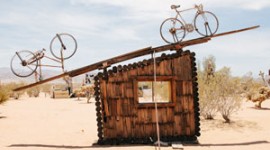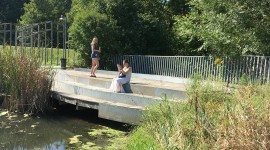Adrián Cerezo, PhD, Expert on Child Development and Social Ecology, Writes in Support of "Greenwood Pond: Double Site"

On February 15, 2024, Adrián Cerezo wrote the following letter to the Des Moines Art Center (DMAC) Director Kelly Baum concerning plans to demolish Greenwood Pond: Double Site, a site-specific installation by the internationally acclaimed leader of the land art movement, Mary Miss, commissioned for the Art Center’s permanent collection. The work, which opened in 1996, is in a diminished condition with some sections fenced off, suggesting the DMAC has not fulfilled its contractual obligation to “reasonably protect and maintain” the work. The Cultural Landscape Foundation (TCLF) is calling for the DMAC to reverse it demolition decision and, instead, to engage in meaningful consultations with the artist and others to find a solution that restores the artwork and develops a long-term, ongoing maintenance plan.
Dear Ms. Baum,
Greetings. I am alarmed to learn that the work of land art “Greenwood Pond: Double Site” by Mary Miss is slated for demolition. As a social ecologist who studies the fundamental role of contemporary art in addressing socio-environmental challenges and nurturing a sustainable future, I believe this decision is shortsighted in two ways:
First (the urgent request), Greenwood Pond: Double Site is a fundamental part of the canon of socially minded, environmentally focused art.
Under the surface of what seems like a genteel landscape art installation is a deep network of diverse, interdisciplinary, broadminded, living relationships built patiently and respectfully, over decades. The installation in your center is the physical manifestation of these relationships. It is also the manifestation of a belief in human ingenuity, our capacity to imagine and to nurture a sustainable future. Her broader work reflects a practice of curiosity and hope rather than the fear that overwhelms most contemporary environmental art. For these reasons, among many others, Greenwood Pond: Double Site was (and is) a signal to a fundamentally different kind of environmental, community minded land art.
I am not an artist, but I am part of the broad, diverse network that has benefited from the groundbreaking work by Mary Miss. Her approach of relationship building, dialogue and co-production, built on the unique power of the aesthetic experience to transport and transform us, has influenced the way I approach efforts to nurture sustainable development from the grassroots to my work with the United Nations.
Discarding this work is akin to shredding Matisse’s paper cutouts because they are too difficult to preserve. Your center is well advised to side with future artists, social and environmental scholars, and currently underrepresented communities by protecting the legacy embodied by Greenwood Pond: Double Site. The alternative to expend significant time and energy justifying why you destroyed this referential work.
Second (the proposal), protecting Greenwood Pond: Double Site is a unique opportunity to elevate the relevance of your center and attract resources.
As I mentioned above, Greenwood Pond: Double Site as an installation is the physical manifestation of a living network that has grown exponentially and become more sophisticated and complex since its original construction. Instead of demolishing the installation, your institution could leverage the current fragile state of the work (in collaboration with Mary Miss) to convene dialogues on the issues represented in the work. The Des Moines Art Center could host a groundbreaking dialogue about how this site can evolve in a way that reflects its importance in art history as well as the realities imposed by the converging environmental crises that are promoting it’s accelerated decay. If your institution takes on this challenge motivated by curiosity rather than fear, this site could compound its importance in the canon by serving as a reference for contemporary art before and during the era of climate change.
I wholeheartedly encourage you, your curators, and your board to reconsider the decision as it stands and make a statement that reaffirms the role of contemporary art (and institutions such as yours) to be a force for imagining, creating, and nurturing a sustainable future. If you are willing to consider the creative path, I will gladly make myself available (as I am sure will many other people in the network) to support your efforts.
Sincerely,
Adrián Cerezo
Adrián Cerezo, PhD, MESc
Visiting Scholar & CHILD Fellow
Yale Child Study Center
230 South Frontage Road
New Haven, CT, USA, 06520
socialemotionalchild.org
Senior Research Fellow
Early Years and Sustainable Development Research Initiative
University of Maine Portland Gateway
163 Fore Street, Portland, ME 04101
https://umaine.edu/portland/
Senior Social Ecology Research Fellow
City as Living Laboratory
349 Greenwich Street #5,
New York, NY 10013
https://www.cityaslivinglab.org/framework
Senior Fellow
Capita
capita.org
< Back to the Greenwood Pond: Double Site Support Letters Page |







